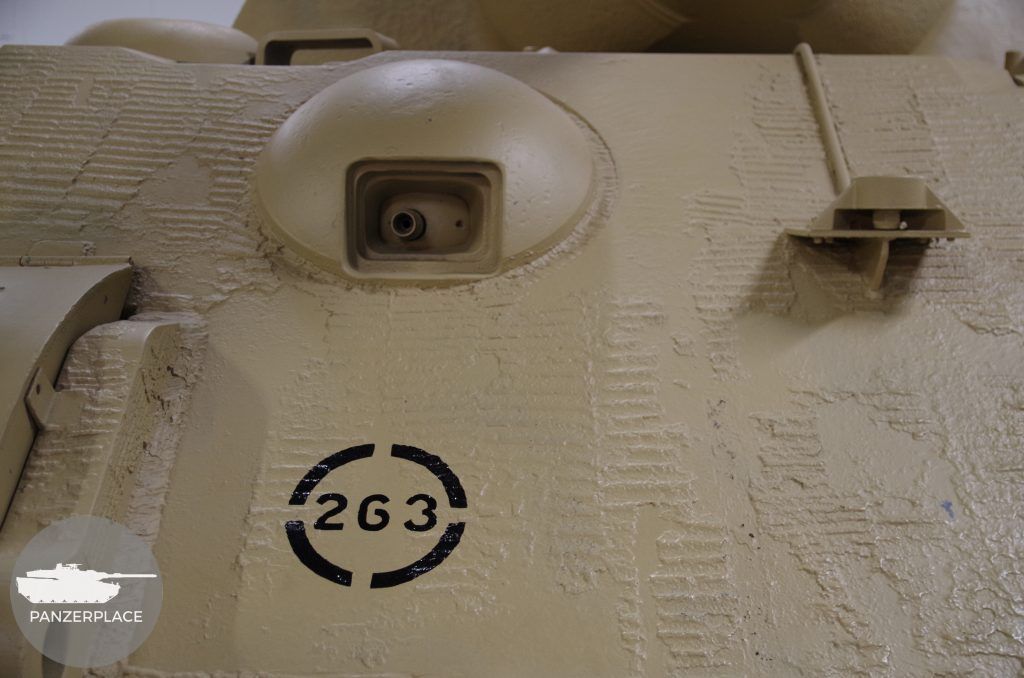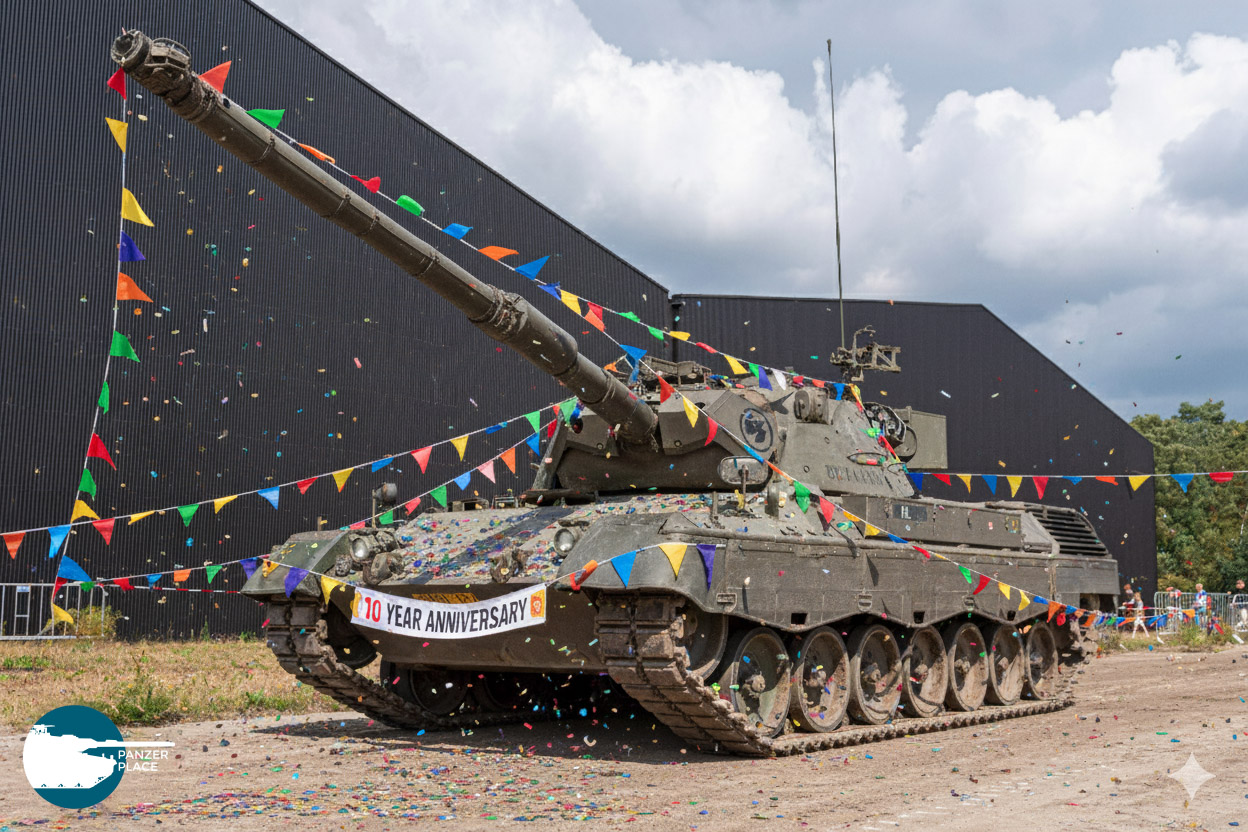The Tiger Collection at The Tank museum in Bovington, opened April 2017, is the place to visit for all armour enthusiasts. It is a unique display of (almost) all variants in which the Tiger was produced. Not only the museum’s Tiger I is featured, but also two Tiger II tanks, as well as the Jagdtiger and Ferdinand tank destroyers. The latter of which was built on Porsche’s failed Tiger tank design. With only two Ferdinand tank destroyers left in the world, it is clear that The Tank Museum pulled off an impressive feat; the Ferdinand was shipped from the US to the UK in a 35 day journey. The display of all these Tigers together is thrilling to say the least and makes for an extraordinary panorama.

Due to its large success, the duration of the Tiger Collection – originally scheduled to last until autumn 2018 – has been extended to last until autumn 2019. For this special occasion, both the initial production King Tiger and the Jagdtiger received a new layer of paint.
The new colour – an approximation of Dunkelgelb RAL 7028 – was chosen to portray the vehicles in the state they were originally captured in. Both of these vehicles were captured at Henschel’s proving ground at Haustenbeck (which is located in the Senne military complex). Recently, a video detailing the process of repainting the Tigers was published by the museum.
Mistakes were made
For a museum that “(…) always aspires to be the consultative and authoritative source on historical armoured vehicles” it is sad to see some beginner mistakes were made. When it comes to the video, Jens Mühlig the person behind Historycolors.de – considered to be an authority on German wartime colour usage -, posted a summary of some of the mistakes on Facebook :

It is a true shame to see that a museum like the The Tank Museum still is not in touch with the scene; lots of new work is continually being published and new facts are dug up one after another. The museum went the extra mile and stencilled the vehicle’s registration number in a circle on the glacis. A job well done.. but wait.. well, you see, it is actually the wrong number that has been applied. Even on their own Tiger blog the photos have enough detail to clearly see the number 253. Instead of the original 253 the Jagdtiger now sports the number 263, a pitiful mistake.
Note that this registration number is not an identifier for its place in a unit (i.e. company, platoon and vehicle no.). Instead, this particular number was applied to differentiate between vehicles that where confiscated for testing – and thus not accepted for army service – by Wa Prüf 61. Using these vehicles, trials were conducted to establish their performance and suggest improvements.




The wrong colour?
Updated September 2025
Coming back to the repaint itself; the sole reason was to restore accuracy and show the vehicles in the colour in which they were found. This goal has been achieved for the Jagdtiger, but not necessarily for King Tiger V2.
A set of what appear to be genuine colour photos, taken at the Haustenbeck Panzerversuchsstation 962. These show both the Jagdtiger and King Tigers V2 and 280 009 or 280 012, together with other vehicles from the proving ground in full colour. It is striking that both King Tigers in the image (the one in the foreground is V2) do not appear to be yellow at all!


While the Panther and Jagdtiger clearly are painted shades of RAL 7028, dark yellow, both King Tigers appear in far darker shade, nearing grey. Since these vehicles appear together in one photograph, the difference in colour cannot simply be explained away by a colour shift. It is noteworthy that they don’t look as dark as the VK 30.01 (H) in dark grey, RAL 7021, also visible in one of the photographs. Based on the existing regulations, they should have left the factory painted dark yellow.
There may not be an easy explanation to what exact colour we are seeing on the King Tigers or why they looked this way. However, it is worth remembering these vehicles lived hard lives at the proving ground. They were working test vehicles, driven over long distances — probably even farther than their normal combat service counterparts. On top of that, they were continually modified, rebuilt and stripped for parts depending on the tests being conducted. Smoke- and gas-tightness trials were also carried out at Haustenbeck, which could have left deposits on the vehicles. This could clarify their greyish, patchwork appearance: layers of dust, grime, exhaust and oil residue altered their appearance.
Other photos of King Tiger V2 do indeed suggest it was painted in a much lighter colour shade, suggesting that the colour photos do not show a clean coat of paint, but the accumulated effects of constant testing.





Leave a Reply